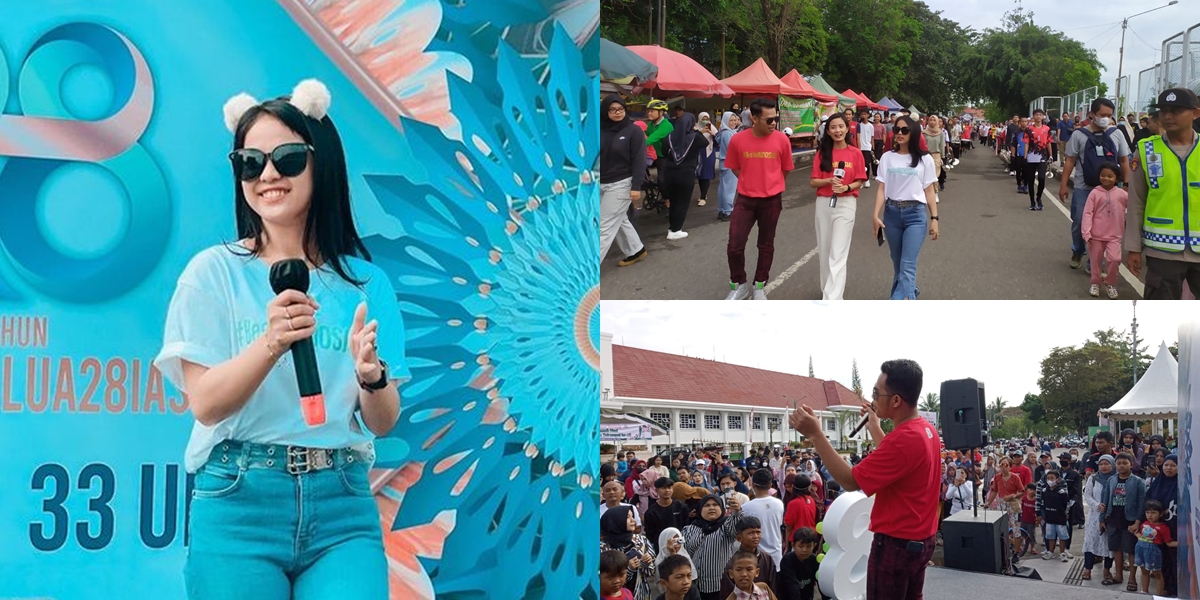Unique and Classy, Here Are 5 Regional Batiks Perfect for Lebaran Gatherings
Explore 5 regional batiks with unique motifs and deep philosophies, the perfect choice for meaningful and stylish Lebaran gatherings!

Kapanlagi.com - Eid in Indonesia is always associated with various traditions that warm the atmosphere, but in Indramayu Regency, there is a unique tradition that captivates attention. This tradition is the Syawalan Parade, a procession featuring a festive dragon puppet that symbolizes joy after Ramadan. The residents of Krasak Village, Indramayu, regularly hold this parade as part of a colorful and warm Eid celebration.
The Syawalan Parade provides an opportunity for local residents to gather, socialize, and express happiness. The large, colorful dragon puppet is not just a decoration, but also a symbol of hope and prayers for blessings. This tradition not only attracts the villagers but also draws the attention of tourists and photographers who wish to capture this special moment.
In addition to the Syawalan Parade, Eid in Indramayu is also filled with several other distinctive traditions that have become part of the local culture. Behind the joy, there is a profound meaning that strengthens the bonds of brotherhood and family in the community. Here is the information.
The tradition of Irim-Irim or delivering food during Eid is an inseparable ritual from the life of the Indramayu community. After performing the Eid al-Fitr prayer, residents send various traditional Eid dishes such as ketupat, chicken opor, and traditional cakes to each other. This tradition serves as a means to share happiness with family, neighbors, and close relatives. Delivering food on Eid is not only a form of sharing but also strengthens social relationships among residents.
In the Indramayu Javanese language, Irim-Irim means sending or bringing food to close relatives. One of the characteristics of this tradition is the involvement of all family members, from the young to the old. Housewives usually prepare dishes since the night before Eid. Early in the morning, they prepare the food that will be taken and shared. After the Eid al-Fitr prayer, they go to the houses of relatives and neighbors while bringing traditional Eid dishes.
Besides being an occasion for sharing food, irim-iriman also carries the meaning of togetherness. This tradition makes the Indramayu community closer, both among families and between neighbors. The food that is shared becomes a symbol of giving and receiving blessings on this day of victory.
Visiting graves is a tradition practiced by most of the people of Indramayu before or after performing the Idul Fitri prayers. This activity involves visiting the graves of parents or family members who have passed away to pray for them. This tradition is not just a pilgrimage, but also a form of respect and prayer for those who have gone before us. The community feels closer to their ancestors and seeks blessings for a better life.
Those who participate in visiting graves usually bring flowers or holy water to sprinkle on the grave. In some places, there are even those who bring food or cakes to share after the visit. This becomes a moment of reflection and also a source of strength for the families left behind to continue living with enthusiasm. Thus, visiting graves becomes a part of Eid celebrations that unites feelings of longing, prayer, and togetherness across generations.
Moreover, the tradition of visiting graves also symbolizes the continuity of family traditions. Through this activity, the people of Indramayu teach their children to appreciate and remember the contributions of their ancestors. This tradition strengthens the love for the homeland, family, and fellow beings.
Before and after the Eid al-Fitr prayer, the people of Indramayu usually hold the Obrog tradition, which is a tradition of street performing where residents roam the village. Obrog is not just an ordinary street performance, but resembles a parade, as the performers play various tarling musical instruments (traditional dangdut from West Java's northern coast) using a sound system.
The Obrog tradition is often eagerly awaited by the residents, featuring performers who use funny and scary barongan puppets. Typically, the Obrog involves up to 10 people, consisting of musicians, barongan character players, and those who carry containers to collect money from the houses of residents in Indramayu.
(kpl/frr)
Cobain For You Page (FYP) Yang kamu suka ada di sini,
lihat isinya
Explore 5 regional batiks with unique motifs and deep philosophies, the perfect choice for meaningful and stylish Lebaran gatherings!
Weekend holidays become more exciting with 5 simple and refreshing blewah ice recipes; from classic to contemporary, perfect for family gatherings!
The THR red envelope tradition during Eid in Indonesia is a unique practice that combines the influences of Chinese and Arab cultures, as well as Islamic values in sharing.
Manado has a unique Eid tradition, a harmonious blend of cultures, from Ketupat Eid, Iwad to Tumbilotohe, strengthening ties and local identity.
Check out the estimated latest toll rates for Surabaya-Malang in 2025 for various vehicle categories, complete with tips for economical and efficient travel, as well as information on the Surabaya-Probolinggo toll rates.
Excessive consumption of coconut milk and sweet foods during Eid can increase cholesterol and blood pressure, know the tips for healthy consumption!
Discover various delicious chicken curry recipes and interesting variations to enjoy with your family.
As Eid approaches, keep your uric acid levels under control with fresh drink options rich in vitamin C and antioxidants, such as orange juice, kiwi juice, and others. Consume wisely!
The tradition of giving new money during Eid has existed since the 16th century. Check out its history and how it has developed to this day.
Find out how to start a conversation with distant relatives during Eid to make the atmosphere warmer and more enjoyable.
Discover various unique and interesting photo poses to celebrate Eid on Instagram so your feed looks even cooler!
Air Rumi Akbar's latest photo shows him getting more handsome and adorable. His closeness to Irish Bella also attracts attention.